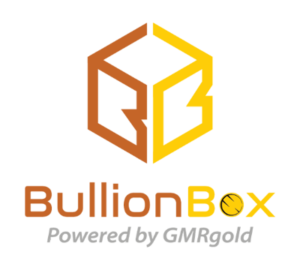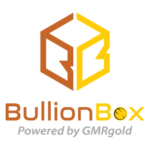When you’re planning for retirement, choosing the right investment vehicle can feel like standing at a crossroads. On one path, you’ve got the traditional Roth IRA with its promise of tax-free growth. On the other hand, there’s the Gold IRA, offering the security of physical precious metals. Both have their merits, but which one protects your wealth better?Recent surveys show that most Americans worry their retirement savings won’t last through their golden years. With inflation eating away at purchasing power and market volatility keeping investors up at night, it’s no wonder people are exploring alternatives to traditional retirement accounts. You’ve got options, and understanding them doesn’t require a finance degree.Let’s break down these two retirement strategies so you can make an informed decision about your financial future: choose a gold IRA or a gold Roth IRA.Quick Comparison at a Glance: Gold IRA vs Gold Roth IRABefore we dig deeper, here’s what sets these two retirement accounts apart:Tax TreatmentGold IRA: Traditional tax-deferred or Roth after-tax options availableRoth IRA: After-tax contributions, tax-free withdrawals in retirementInvestment OptionsGold IRA: Physical gold, silver, platinum, and palladiumRoth IRA: Stocks, bonds, mutual funds, ETFs, and moreContribution Limits (2024)Both: $7,000 annually ($8,000 if 50 or older)Physical AssetsGold IRA: Yes, stored in approved depositoriesRoth IRA: No, unless using self-directed optionUnderstanding Your Retirement Account OptionsThink of retirement accounts as special containers for your investments. The government created these containers with specific rules and benefits to encourage people to save for their future. Some containers offer tax breaks now, others promise tax-free money later, and some let you hold physical assets like gold coins.The key to successful retirement planning isn’t picking the “perfect” account—it’s understanding which type aligns with your goals and concerns. Are you worried about inflation? Do you want flexibility in retirement? These questions matter more than following the latest investment trend.The Gold IRA: Your Precious Metals Retirement OptionWhat Exactly Is a Gold IRA?A Gold IRA is essentially a self-directed Individual Retirement Account that holds physical precious metals instead of paper assets. Rather than owning shares of Apple or bonds from the government, you own actual gold bars or coins stored in a secure, IRS-approved depository.These accounts follow the same contribution rules as traditional IRAs, but they require a special custodian who can handle precious metals transactions. You can’t just buy gold coins and stick them in your safe—the IRS has specific requirements about purity levels, approved metals, and storage facilities.People typically turn to Gold IRAs when they want something tangible backing their retirement savings. It’s the financial equivalent of keeping some cash under the mattress, except it’s perfectly legal and comes with tax advantages.The Pros and Cons of Gold IRAsThe Good Stuff:Physical gold has been a store of value for thousands of years. When currencies collapse or stock markets crash, gold often holds steady or even increases in value. This makes it an excellent hedge against inflation—while your dollar might buy less tomorrow, gold tends to maintain its purchasing power over time.You also get true portfolio diversification. When stocks zig, gold often zags, providing balance during turbulent times. Plus, there’s something psychologically comforting about owning actual precious metals rather than just numbers on a screen.Gold IRAs offer the same tax advantages as traditional IRAs. You can deduct contributions from your current taxes (if you qualify), and your gold grows tax-deferred until retirement.The Not-So-Good Stuff:Storage and insurance fees can add up quickly. You’re looking at annual costs ranging from 0.5% to 1% of your account value, which might not sound like much, but compounds over time. Unlike stocks that pay dividends or bonds that generate interest, gold just sits there—beautiful but unproductive.Liquidity can be tricky, too. Selling physical gold takes time, and you’ll face dealer spreads that can eat into your returns. The setup process is more complex than opening a regular IRA, requiring coordination between multiple parties.There’s also the risk of getting scammed. The precious metals industry attracts its share of shady dealers pushing overpriced coins or making unrealistic promises about returns.The Roth IRA: Tax-Free Growth for Your FutureWhat Makes a Roth IRA Special?A Roth IRA flips the traditional retirement account model on its head. Instead of getting a tax break today, you pay taxes on your contributions now in exchange for tax-free withdrawals in retirement. It’s like paying admission once and riding all the rides for free later.You fund a Roth IRA with money you’ve already paid taxes on. Once inside the account, your investments grow without Uncle Sam taking a cut. When you reach 59½ and your account has been open for at least five years, every penny you withdraw—including all those years of growth—comes out tax-free.This structure makes Roth IRAs particularly attractive if you expect to be in a higher tax bracket during retirement or if you simply want the peace of mind that comes with knowing exactly how much money you’ll have to spend.The Pros and Cons of Roth IRAsThe Advantages:Tax-free withdrawals in retirement are the headline benefit. Imagine your investments doubling or tripling over 30 years, and you get to keep all of it. There are no required minimum distributions either, meaning you can let your money grow as long as you live.Roth IRAs offer incredible flexibility. You can withdraw your contributions (not earnings) anytime without penalty, making them a hybrid retirement-emergency fund. The investment options are nearly limitless—stocks, bonds, mutual funds, ETFs, even real estate investment trusts.For estate planning, Roth IRAs shine. Your heirs inherit the account tax-free, giving you a powerful tool for transferring wealth to the next generation.The Drawbacks:Income limits can lock out high earners. For 2024, the ability to contribute phases out starting at $153,000 for single filers and $240,000 for married couples filing jointly. There’s no immediate tax deduction either, which means contributing to a Roth IRA won’t lower this year’s tax bill.The five-year rule can trip people up. Even if you’re over 59½, you need to wait five years after your first contribution before withdrawing earnings tax-free. This applies to each Roth conversion, too, creating multiple five-year clocks to track.Your investments remain exposed to market volatility. While tax-free growth sounds great, it doesn’t protect you from losing money if your investments perform poorly.Head-to-Head: Comparing Your OptionsLet’s put these retirement vehicles side by side and see how they stack up:Tax Treatment: Gold IRAs can be either traditional (tax-deferred) or Roth (after-tax). Most people choose traditional Gold IRAs for the immediate tax deduction. Standard Roth IRAs always use after-tax dollars but promise tax-free withdrawals later.Investment Flexibility: Roth IRAs win hands down here. You can invest in almost anything except collectibles and life insurance. Gold IRAs limit you to IRS-approved precious metals—no rare coins or jewelry allowed.Costs and Fees: Roth IRAs typically cost less, with many brokers offering commission-free trades and no annual fees. Gold IRAs involve storage fees, insurance costs, and dealer markups that can total 1-2% annually.Liquidity: Selling stocks or mutual funds in a Roth IRA takes seconds. Liquidating physical gold requires finding a buyer, shipping the metals, and waiting for payment—a process that can take weeks.Protection Against Inflation: Gold historically performs well during inflationary periods, while traditional Roth IRA investments might struggle. However, a diversified Roth IRA portfolio can include inflation-protected securities and commodities.Making Your Choice: Decision FrameworkConsider a Gold IRA If You:Value tangible assets and want something physical to back your retirement. If the thought of owning actual gold brings you peace of mind, that psychological benefit alone might justify the extra costs and complexity.You’re also a good candidate if you’ve already maxed out other retirement accounts and want additional diversification. High earners who exceed Roth IRA income limits might find Gold IRAs attractive since there are no income restrictions.Those particularly concerned about currency devaluation, systemic financial risks, or inflation should give Gold IRAs serious consideration. If you believe the dollar will lose significant value or that traditional financial systems face major challenges, precious metals offer an alternative store of wealth.Consider a Roth IRA If You:Want maximum investment flexibility and minimal hassle. If you prefer choosing from thousands of investment options and making changes with a few clicks, Roth IRAs fit the bill perfectly.Young investors benefit tremendously from Roth IRAs. With decades until retirement, tax-free compound growth becomes incredibly powerful. If you’re in a low tax bracket now but expect higher income later, paying taxes today at lower rates makes financial sense.Those who value liquidity and might need access to their contributions should lean toward Roth IRAs. The ability to withdraw contributions penalty-free provides a safety net that Gold IRAs can’t match.The Best of Both Worlds: Gold in a Roth IRA?Here’s where things get interesting—you can hold precious metals in a self-directed Roth IRA. This hybrid approach combines tax-free growth with inflation protection, though it comes with added complexity.Setting up a self-directed Roth IRA for precious metals requires finding a custodian who specializes in alternative investments. You’ll still need approved storage and will pay similar fees to a traditional Gold IRA. The main difference? Your gold grows tax-free, and qualified withdrawals won’t trigger taxes.The process works like this: Open a self-directed Roth IRA, fund it with after-tax dollars, direct your custodian to purchase approved precious metals, and arrange for secure storage. It’s more involved than buying index funds, but it gives you the unique combination of physical assets and tax-free growth.Tax Implications: What You Need to KnowUnderstanding the tax consequences of each option helps you make smarter decisions. With traditional Gold IRAs, you might get a tax deduction today, but you’ll pay ordinary income tax rates on withdrawals in retirement. If gold appreciates significantly, that entire gain gets taxed as regular income.Roth IRAs require you to pay taxes upfront, but that’s where your tax obligation ends. Whether your investments double or increase tenfold, you won’t owe additional taxes on qualified withdrawals. This certainty helps with retirement planning since you know exactly how much spending power you’ll have.Estate taxes tell another story. Both account types can help reduce estate taxes, but Roth IRAs offer cleaner transfers to heirs. Your beneficiaries receive Roth IRA assets completely tax-free, while inherited traditional Gold IRAs still carry tax obligations.Common Pitfalls to AvoidThe precious metals industry, unfortunately, attracts scammers pushing overpriced “collectible” coins or promising unrealistic returns. Stick with well-known dealers, verify their credentials, and never buy based on high-pressure sales tactics. If someone promises gold will double in value, run the other way.Roth conversion timing mistakes can cost thousands in unnecessary taxes. Converting traditional IRA assets to Roth during high-income years means paying top tax rates. Smart investors wait for lower-income years or market downturns to convert at better rates.Storage violations with Gold IRAs can trigger severe penalties. Taking personal possession of your IRA gold, even temporarily, counts as a distribution and could result in taxes plus a 10% early withdrawal penalty. Always use approved depositories.

 with 700+ reviews
with 700+ reviews



